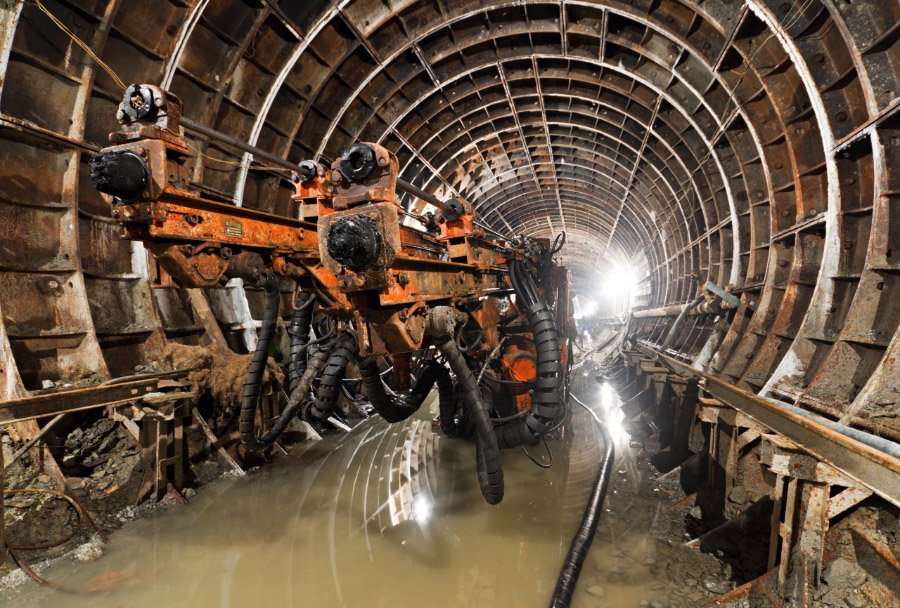Get Free Sample
1)Removal of Moisture from metal mineral
Studies have shown that sodium polyacrylate and other super-absorbent polymers or SAPs can be used to absorb moisture form metal mineral. Heavy metals are very harmful pollutants and can have detrimental effects on aquatic environments and human beings because of high toxicity, bioaccumulation, and non-degradability. Sodium polyacrylate can absorb solutions quickly absorb the moisture of the metal when you do Activities like mining . Also, sodium polyacrylate is a low-cost, non-toxic, and biocompatible option for water absorbtion and slurry solidification.

2)Mining&Oil&Gas drilling
high absorbent polymer (SAP) plays an important role in the development of shale oil and gas plays by allowing drilling crews to rapidly solidify drilling fluid waste (drilling mud, drill cuttings) as it is generated. When compared to other absorbents and cement products, SAP’s superior liquid absorbency and retention help oil and gas companies minimize waste disposal costs, treatment time, and environmental impact.

3)Tunnel Directional Drilling
Superabsorbent polymer (SAP) technologies are integral to the HDD industry for their ability to rapidly solidify drilling fluid waste (drilling mud, drill cuttings) at the source of generation, at centralized waste treatment facilities, and at solid waste landfills. When compared to commodity absorbents and cement products, SAP-based technologies feature superior liquid absorbency and retention which allows HDD crews to minimize waste disposal costs, treatment time, and environmental impact.
4)Waste landfills & Sludge & Slurry
Liquid-bearing wastes such as wastewater treatment sludge, slurry, mine tailings, tank bottom sludge and many other industrial waste streams are difficult to manage and pose severe threats to the natural environment. super absorbent polymer powder (SAP) are widely used by site remediation contractors to rapidly solidify liquid-bearing waste on-site for transport and disposal at solid waste landfills. Compared to other absorbents SAP technologies offer superior absorbency and retention which allows remediation professionals, waste treatment facilities, and landfills to minimize treatment amendment quantity, time on-site, disposal costs, and releases of contaminants to the natural environment.
What is a slurry?A slurry is a thin sloppy mud or, in extended use, any fluid mixture of a pulverized solid with a liquid (usually water), often used as a convenient way of handling solids in bulk. (Wikipedia, https://en.wikipedia.org/wiki/Slurry)
5)Environmental Remediation Company
Liquid-bearing waste streams from industrial processes are technically challenging and costly to manage. SOCO® SAP are commonly used by environmental remediation professionals to solidify industrial waste prior to off-site disposal at a solid waste facility. SOCO® SAP compared to other absorbents, SAP-based technologies feature superior liquid absorbency and retention which allows remediation professionals to minimize waste disposal costs, treatment time, and environmental impacts.
6)Medical Waste dispose
Liquids from medical procedures, medical devices, and food testing laboratories of hospital normally require special handling and costly disposal.
SOCO® SAP used in these environments reduce risks and costs associated with biological waste exposure.
Types of Waste Treated
Food testing fluid
Suction fluid
Wound exudate
Emergency spills
biodegradable sap (SAP) are used worldwide for a wide variety of hygiene, commercial, ecological, medical, and customer applications. Sodium polyacrylate SAPs, particularly, are the absorptive workhorse of the contemporary infant diaper, lots of hazardous waste treatment processes, and also medical waste solidification. Despite every one of the different ways that SAPs help millions of people every day to live safer, healthier, cleaner, and also easier lives, there are still a number of misconceptions concerning SAPs.
While the unit expense of Super absorptive polymer (SAPs) is higher than that of conventional absorbents (sawdust, concrete, fluff, etc.), SAPs feature much remarkable absorbency, meaning SAPs are a lot more effective with, extremely low dose prices (0.5% – 1.5%, by weight) generally required to strengthen a liquid-bearing waste stream.
Garbage absorbent is a specialized material designed to absorb and neutralize liquids, odors, and other contaminants from garbage or waste materials.
Concrete is commonly applied at dosage prices of 10%-25% (by weight). The absorbency of sawdust is so low that dosages of 100%-200% (by weight) are often needed to strengthen liquid-bearing waste.
In summary, SAPs can remove totally free liquid in a liquid waste stream with 10-25 times less reagent than cement as well as much as 200 times less product than sawdust. Bear in mind, if a ton of sawdust is contributed to a ton of waste, you will pay to throw away 2 heaps at a garbage dump (waste plus the sawdust). High efficiency super water absorbent polymer decrease the amount of waste disposed at the landfill which decreases project costs. SAPs are not expensive, they are economical.
Drilling Fluid Waste Treatment Solidifying is a technology for harmless, reduced and resourceful treatment of drilling fluid waste generated during oil and gas exploration and development. Super absorbent polymers sap, including those made from sodium polyacrylate, have generally been considered environmentally friendly due to their low biodegradability and minimal toxicity.
We have “Ask The Expert” online service 24/7. If you have any questions please contact us.